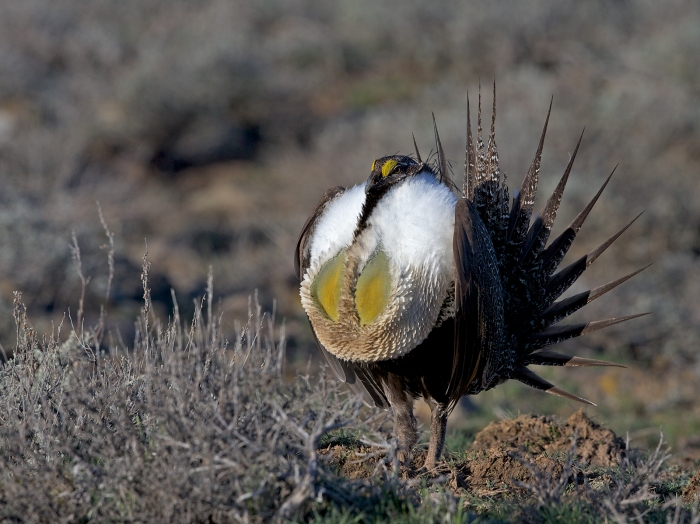The Return of Bird of the Week: Greater Sage Grouse

Greater Sage Grouse male displaying, Snake River Plain, Idaho
The Greater Sage Grouse is an iconic species of the Western United States. It’s also near-threatened. Preserving its habitat is one of the hot button issues of conservation in the United States.
This is North America’s biggest grouse, with the males sometimes weighing more than six pounds. Thy are famous for their lekking behavior: the males assemble in a relatively small area to engage in a complex display and compete for the attention and breeding privileges.

Male Greater Sage Grouse competing for attention of two hens to the left
Mostly the females show a studied indifference to the males’ conduct.

Female Greater Sage Grouse on lek
Greater Sage Grouse are sagebrush obligates, meaning they depend on relatively undisturbed sagebrush habitat for forage, nesting and cover. As that sagebrush habitat disappears under pressure of mining, oil and gas development, invasive grasses, grazing and other human impacts, the peril of the Greater Sage Grouse increases.

Male Greater Sage Grouse in full display, Snake River Plain, Idaho
I wonder whether the Greater Sage Grouse is found as far to the east as South Dakota. Lots of sagebrush there. I love the line about the females’ indifference to the males’ displays, and the photos are spectacular, as always.
Greater Sage Grouse make it into the northwesterly corner of South Dakota. They formerly occupied about a quarter of the state, but loss of habitat has driven them out of those areas.
/WC